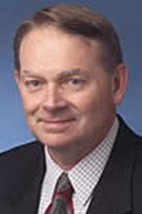October Education: C&Q Baseline Guide Update
Join us for a review of the newly released ISPE C&Q Baseline Guide 5, 2nd Edition. The ISPE Commissioning and Qualification guide was first issued in 2001 and reflective of that time. With emerging markets, changes in the regulatory landscape, advances in commissioning and qualification methodology, the commissioning and qualification CoP has rewritten the guide to align with present day requirements and best practices applicable to the current market. This guide considers applicable regulatory requirements as identified in ICH and ASTM E2500. The guide provides a well-defined framework for a lifecycle QRM and risk-based approach to verification and documentation of fitness for use.
Speakers:
Mark E. Rezac, PE
Director Compliance Service, IPS
Mark is a registered professional engineer with over 40 years of diverse engineering experience, the last 33 spent in the pharmaceutical industry. Mark's experience covers sterile products and aseptic processing, oral solid dosage facilities, critical utilities, HVAC, pharmaceutical and R&D facility design, commissioning and qualification, project management and global regulatory compliance.
Steven Wisniewski
Principal Consultant, CAI
Steven has more than 35 years of experience in the pharmaceutical, biotech, and device industries. Steve has served in manufacturing facility and corporate senior management roles at Sterling Drug and Bausch & Lomb. He has completed a wide variety of pharmaceutical manufacturing, filling and critical support operations to major R&D laboratories, facilities and upgrades.
Registration Information:
|
COST |
|
|---|---|
|
ISPE Members |
$60 |
|
Non-Members |
$80 |
|
Young Professional Member |
$35 |
|
Student/Retired/Unemployed |
$10 |


